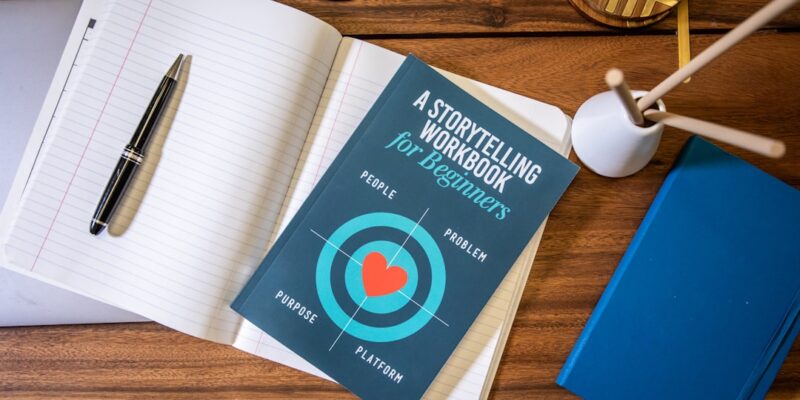
Boost Book Sales with Effective Email Campaigns
Email marketing is a powerful tool that authors and publishers can use to promote their books and increase sales. It involves sending targeted emails to a list of subscribers who have expressed interest in receiving updates and offers from you. Email marketing allows you to directly reach your audience, build relationships with potential readers, and drive traffic to your book sales pages.
One of the key benefits of email marketing for authors and publishers is the ability to build a loyal fan base. By consistently delivering valuable content and offers to your subscribers, you can establish yourself as an authority in your genre and gain the trust of your audience. This can lead to increased book sales, as your subscribers are more likely to purchase your books and recommend them to others.
Another benefit of email marketing is the ability to personalize your messages. With email marketing software, you can segment your email list based on factors such as reading preferences, location, or purchase history. This allows you to send targeted campaigns that are more likely to resonate with your subscribers and result in higher conversion rates.
Key Takeaways
- Email marketing is a powerful tool for promoting book sales.
- Crafting the perfect email campaign involves understanding your audience and creating compelling content.
- Building an email list of potential readers requires offering incentives and promoting your list through various channels.
- Segmenting your email list allows for targeted campaigns that are more likely to convert.
- Choosing the right email service provider is crucial for managing your campaigns effectively.
Crafting the Perfect Email Campaign for Your Book
Creating a successful email campaign requires careful planning and execution. Here are some tips to help you craft the perfect email campaign for your book:
1. Define your goals: Before you start creating your email campaign, it’s important to define what you want to achieve. Are you looking to generate pre-orders for your upcoming book? Or do you want to promote a limited-time discount on one of your existing titles? By clearly defining your goals, you can tailor your email content and calls-to-action accordingly.
2. Write compelling subject lines: The subject line is the first thing that recipients see when they receive your email, so it’s crucial to make it attention-grabbing. Use language that creates curiosity or offers a benefit to the reader. Avoid using spammy or clickbait subject lines, as they can damage your reputation and result in lower open rates.
3. Personalize your emails: Personalization is key to engaging your subscribers and making them feel valued. Use merge tags to include the recipient’s name in the email, and segment your list to send targeted content based on their interests or preferences. This will make your emails more relevant and increase the chances of conversion.
4. Include a clear call-to-action: Every email you send should have a clear call-to-action (CTA) that tells the recipient what you want them to do next. Whether it’s to pre-order your book, sign up for your newsletter, or follow you on social media, make sure the CTA is prominent and easy to understand.
5. Test and optimize: Don’t be afraid to experiment with different elements of your email campaign, such as subject lines, CTAs, or email design. A/B testing can help you identify what works best for your audience and improve your conversion rates over time.
Building an Email List of Potential Readers
Building an email list of potential readers is a crucial step in email marketing for book sales. Here are some strategies to help you grow your email list:
1. Offer valuable content: To entice people to sign up for your email list, offer them something of value in return. This could be a free chapter of your book, a short story related to your genre, or exclusive access to behind-the-scenes content. Make sure the content is relevant and compelling enough to make people want to join your list.
2. Use lead magnets: A lead magnet is a free resource that you offer in exchange for someone’s email address. This could be an ebook, a checklist, a template, or any other resource that provides value to your target audience. Create a landing page where visitors can download the lead magnet by entering their email address.
3. Run contests or giveaways: Contests and giveaways are a great way to generate buzz and attract new subscribers. Offer a free copy of your book or a bundle of books in your genre as a prize, and ask participants to enter their email address to enter the contest. Promote the contest on your website, social media channels, and other relevant platforms to maximize visibility.
4. Collaborate with other authors or influencers: Partnering with other authors or influencers in your genre can help you reach a wider audience and attract new subscribers. Consider hosting joint webinars, co-writing blog posts, or offering exclusive discounts on each other’s books to encourage cross-promotion and list building.
5. Optimize your website for conversions: Make sure your website has prominent opt-in forms where visitors can easily subscribe to your email list. Use compelling copy and design elements that encourage visitors to take action and join your list.
Segmenting Your Email List for Targeted Campaigns
| Segment | Criteria | Number of Subscribers | Open Rate | Click-Through Rate |
|---|---|---|---|---|
| New Subscribers | Subscribed within the last 30 days | 1,500 | 25% | 10% |
| Engaged Subscribers | Opened or clicked within the last 60 days | 5,000 | 40% | 20% |
| Inactive Subscribers | Haven’t opened or clicked within the last 90 days | 2,000 | 10% | 5% |
Segmenting your email list is an essential strategy for maximizing the effectiveness of your email campaigns. Here’s why it’s important and how to do it effectively:
1. Explanation of email list segmentation: Email list segmentation involves dividing your subscribers into smaller groups based on specific criteria, such as reading preferences, location, or purchase history. This allows you to send targeted campaigns that are more likely to resonate with each segment.
2. Benefits of segmenting your email list: Segmenting your email list has several benefits. First, it allows you to deliver more relevant content to your subscribers, increasing engagement and conversion rates. Second, it helps you avoid sending irrelevant emails that could lead to unsubscribes or spam complaints. Finally, segmenting your list allows you to track the performance of each segment separately and make data-driven decisions for future campaigns.
3. Tips for segmenting your email list effectively: To segment your email list effectively, start by identifying the criteria that are most relevant to your audience and goals. This could be factors such as reading preferences, purchase history, or engagement level. Use your email marketing software to create segments based on these criteria, and make sure to update them regularly as your subscribers’ preferences or behaviors change.
Choosing the Right Email Service Provider for Your Needs
Choosing the right email service provider (ESP) is crucial for the success of your email marketing campaigns. Here are some factors to consider when making your decision:
1. Features and functionality: Different ESPs offer different features and functionality, so it’s important to choose one that aligns with your needs and goals. Consider whether you need features such as automation, segmentation, A/B testing, or integration with other tools or platforms.
2. Ease of use: Look for an ESP that is user-friendly and intuitive, especially if you’re new to email marketing. A complicated interface can make it difficult to set up and manage your campaigns effectively.
3. Deliverability rates: Deliverability rates refer to the percentage of emails that actually reach your subscribers’ inboxes. Look for an ESP with a good reputation for deliverability to ensure that your emails are not ending up in spam folders.
4. Pricing: Consider your budget and the pricing structure of different ESPs. Some charge based on the number of subscribers, while others offer tiered pricing based on the number of emails sent per month. Choose an ESP that offers a pricing plan that fits your needs and growth trajectory.
5. Customer support: Check whether the ESP offers reliable customer support, such as live chat, phone support, or email support. This can be crucial if you encounter any technical issues or have questions about using the platform.
Creating Compelling Email Content that Converts
Writing effective email content is essential for engaging your subscribers and driving conversions. Here are some tips to help you create compelling email content:
1. Know your audience: Before you start writing your emails, make sure you have a clear understanding of your target audience. What are their interests, pain points, and motivations? Use this knowledge to tailor your content and make it more relevant to your subscribers.
2. Keep it concise: People receive dozens of emails every day, so it’s important to keep your emails concise and to the point. Use short paragraphs, bullet points, and subheadings to make your content scannable and easy to read.
3. Use storytelling: Storytelling is a powerful tool for engaging your readers and making your emails more memorable. Use anecdotes, personal experiences, or case studies to illustrate your points and create an emotional connection with your audience.
4. Include a clear call-to-action: Every email you send should have a clear call-to-action (CTA) that tells the recipient what you want them to do next. Whether it’s to purchase your book, sign up for a webinar, or leave a review, make sure the CTA is prominent and easy to understand.
5. Test different types of content: Experiment with different types of content to see what resonates best with your audience. This could include book excerpts, author interviews, behind-the-scenes content, or exclusive discounts. Track the performance of each type of content and use the data to inform future campaigns.
Designing Eye-Catching Email Templates for Maximum Impact
Designing eye-catching email templates is crucial for capturing the attention of your subscribers and driving engagement. Here are some tips to help you design effective email templates:
1. Keep it simple: A cluttered or overly complex design can distract from your message and make it difficult for readers to take action. Keep your email templates clean and simple, with a clear hierarchy of information and a focus on the most important elements.
2. Use visuals strategically: Visuals can enhance the impact of your emails and make them more visually appealing. Use high-quality images that are relevant to your content and brand, and make sure they are optimized for fast loading times.
3. Use a responsive design: With the increasing use of mobile devices, it’s important to ensure that your email templates are responsive and display correctly on different screen sizes. Test your templates on different devices and email clients to make sure they look good and function properly.
4. Use color strategically: Color can evoke emotions and create a sense of brand identity. Use colors that align with your brand and evoke the desired emotions in your audience. Consider using contrasting colors for important elements such as CTAs to make them stand out.
5. Test different designs: A/B testing can help you identify which email designs perform best with your audience. Test different layouts, color schemes, or visual elements to see what resonates best and drives the highest engagement rates.
Measuring the Success of Your Email Campaigns with Analytics
Measuring the success of your email campaigns is essential for understanding what works and what doesn’t, and making data-driven decisions for future campaigns. Here’s how to track and analyze your email campaign analytics:
1. Explanation of email campaign analytics: Email campaign analytics provide insights into the performance of your emails, such as open rates, click-through rates, conversion rates, and unsubscribe rates. By tracking these metrics, you can assess the effectiveness of your campaigns and identify areas for improvement.
2. Metrics to track for measuring email campaign success: Some key metrics to track include:
– Open rate: The percentage of recipients who open your email.
– Click-through rate (CTR): The percentage of recipients who click on a link in your email.
– Conversion rate: The percentage of recipients who complete a desired action, such as purchasing a book or signing up for a webinar.
– Unsubscribe rate: The percentage of recipients who unsubscribe from your list after receiving an email.
3. Tools and resources for tracking email campaign analytics: Most email service providers offer built-in analytics tools that allow you to track and analyze the performance of your campaigns. Additionally, you can use third-party tools such as Google Analytics or Bit.ly to track specific metrics or create custom reports.
A/B Testing Your Email Campaigns for Continuous Improvement
A/B testing is a powerful technique that allows you to compare different elements of your email campaigns and identify what works best for your audience. Here’s how to conduct A/B tests for your email campaigns:
1. Explanation of A/B testing: A/B testing involves creating two or more versions of an email campaign and sending them to different segments of your list. By comparing the performance of each version, you can identify which elements drive the highest engagement and conversion rates.
2. Benefits of A/B testing for email campaigns: A/B testing allows you to make data-driven decisions and continuously improve the effectiveness of your email campaigns. By testing different subject lines, CTAs, email designs, or content types, you can optimize your campaigns for maximum impact.
3. Tips for conducting A/B tests for email campaigns: When conducting A/B tests, it’s important to test only one element at a time to accurately measure its impact. Some elements you can test include subject lines, CTAs, email design, personalization, or sending times. Make sure to track and analyze the results of each test and use the data to inform future campaigns.
Best Practices for Email Marketing in the Book Industry
Here are some best practices for email marketing in the book industry:
1. Provide value: Make sure that every email you send provides value to your subscribers. This could be in the form of exclusive content, discounts, or recommendations for other books in your genre. By consistently delivering value, you can build trust and loyalty with your audience.
2. Be consistent: Consistency is key in email marketing. Set a regular schedule for sending emails and stick to it. This will help you build anticipation and keep your audience engaged.
3. Personalize your emails: Personalization is crucial for engaging your subscribers and making them feel valued. Use merge tags to include the recipient’s name in the email, and segment your list to send targeted content based on their interests or preferences.
4. Test and optimize: Continuously test different elements of your email campaigns, such as subject lines, CTAs, or email design, to identify what works best for your audience. Use the data to optimize your campaigns and improve your conversion rates over time.
5. Monitor and analyze your results: Regularly track and analyze the performance of your email campaigns to understand what’s working and what’s not. Use this data to make data-driven decisions for future campaigns and improve your overall email marketing strategy.
In conclusion, email marketing is a powerful tool for authors and publishers to promote their books and increase sales. By crafting the perfect email campaign, building an email list of potential readers, segmenting your email list for targeted campaigns, choosing the right email service provider, creating compelling email content, designing eye-catching email templates, measuring the success of your email campaigns with analytics, A/B testing your email campaigns for continuous improvement, and implementing best practices for email marketing in the book industry, you can maximize the effectiveness of your email marketing strategy and drive more book sales.
FAQs
What is email marketing?
Email marketing is a digital marketing strategy that involves sending promotional messages or newsletters to a group of people via email.
Why is email marketing important for book releases?
Email marketing is an effective way to reach out to potential readers and promote a new book release. It allows authors to directly communicate with their audience and build a relationship with them.
What are the benefits of email marketing campaigns for book releases?
Email marketing campaigns can help authors increase book sales, build a loyal fan base, and generate buzz around their new release. It also allows authors to track their campaign’s success and make data-driven decisions.
How do I build an email list for my book release?
Authors can build an email list by offering a free sample chapter or exclusive content in exchange for readers’ email addresses. They can also promote their email list on social media and their website.
What should I include in my email marketing campaign for my book release?
An email marketing campaign for a book release should include a compelling subject line, a personalized greeting, a brief synopsis of the book, and a call-to-action to purchase the book. It can also include author interviews, book reviews, and exclusive content.
How often should I send emails for my book release?
Authors should send emails regularly but not too frequently. A good rule of thumb is to send one email per week leading up to the book release and then one email per month after the release to keep readers engaged.
How can I measure the success of my email marketing campaign?
Authors can measure the success of their email marketing campaign by tracking open rates, click-through rates, and conversion rates. They can also use analytics tools to monitor website traffic and sales.


















